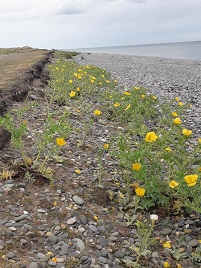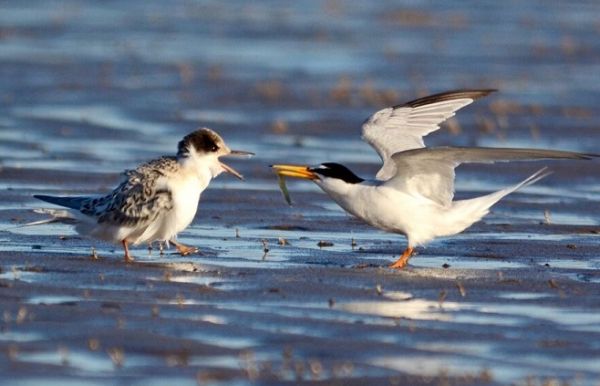Biodiversity Wardens David Wright and Glen Geeves provide an insight into their work at the Ayres National Nature Reserve in late summer:
The late summer at the Ayres NNR is a very busy time for the wardens.
Throughout the summer, the reserve is alive with bird songs; all across the heath and slacks the sounds of skylarks, meadow pipits, tits, and warblers can be heard.
A post-dawn breeding bird survey (carried out on a weekly basis) is the perfect time to revel in the songs and calls of the various breeding birds and their young. The aim of these surveys is to determine the number and success of breeding birds on the Reserve and contributes to our biological monitoring targets under the Convention on Biological Diversity.
In addition to the auditory stimulus, the colours of the flowering plants on the reserve provide the most spectacular visual display. The bright pinks and purples of heather, orchids, restharrow and thyme contrast perfectly with the yellow of yellow-horned poppy, gorse, trefoil, lady’s bedstraw and buttercups.

Yellow horned Poppy (David Wright)
A lot of time is spent monitoring the breeding birds over the preceding months and it’s at this time we are busy trying to count chicks and fledged juveniles.
It’s really rewarding to see juvenile birds such as Little Terns, being fed and tended by their parents, knowing that they are well on their way to adulthood. These are the young birds that we have seen through all the stages of nesting, from egg to chick, and from chick to juvenile.
We can’t help but feel protective towards them, and it is really rewarding to see them fly and leave the colony, watching the chicks first spread their wings and hover momentarily off the ground, knowing that in a few weeks the same bird will fly to the other side of the world.
But at other times, the chicks can fall victim to predators such as gulls, crows and mammals. This can be very disappointing. Terns are long-lived birds and have good breeding years and bad, so we hope they return to try again next year.

Little Tern feeding a juvenile (Marc Hughes)
During the coming weeks, we will be removing the fencing from the breeding areas on the beaches.
The coming autumn will also provide us with the chance to control invasive species such as gorse and willow, largely through removal and management. This is undertaken to preserve the unique habitats and species found at the Ayres NNR.
For further information on the Ayres NNR, contact David Wright on 07624 246594 or david.wright@gov.im


